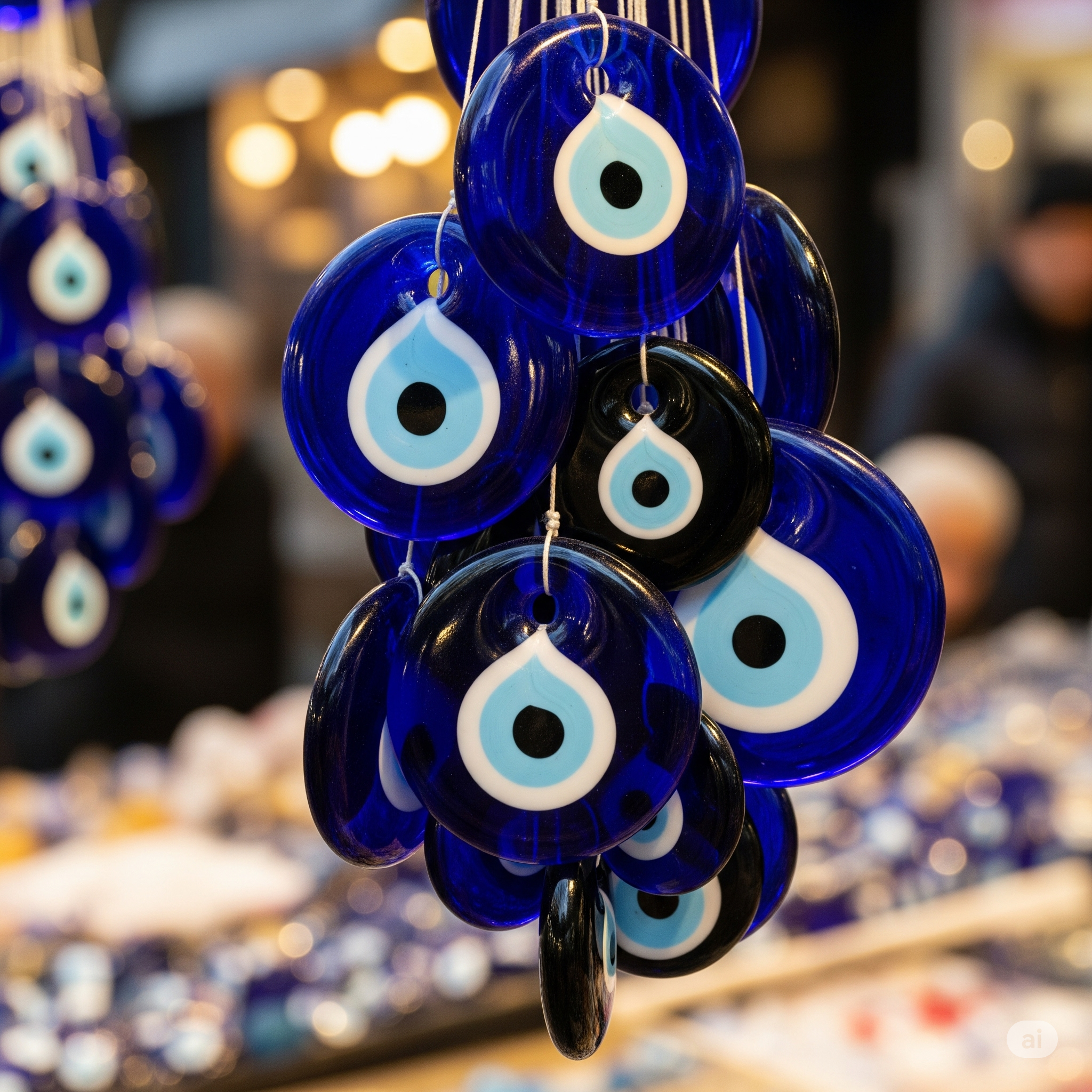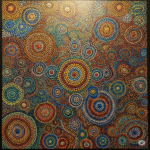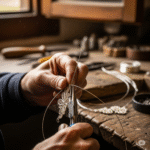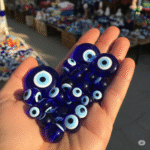Whether hanging from a rearview mirror, embedded in jewelry, or decorating a home’s entrance, the deep blue glass eye of the Nazar Boncuğu is instantly recognizable in Turkey and beyond. But what is this eye really watching? And why do millions of people believe in its protective powers?
What Is the Nazar Boncuğu?
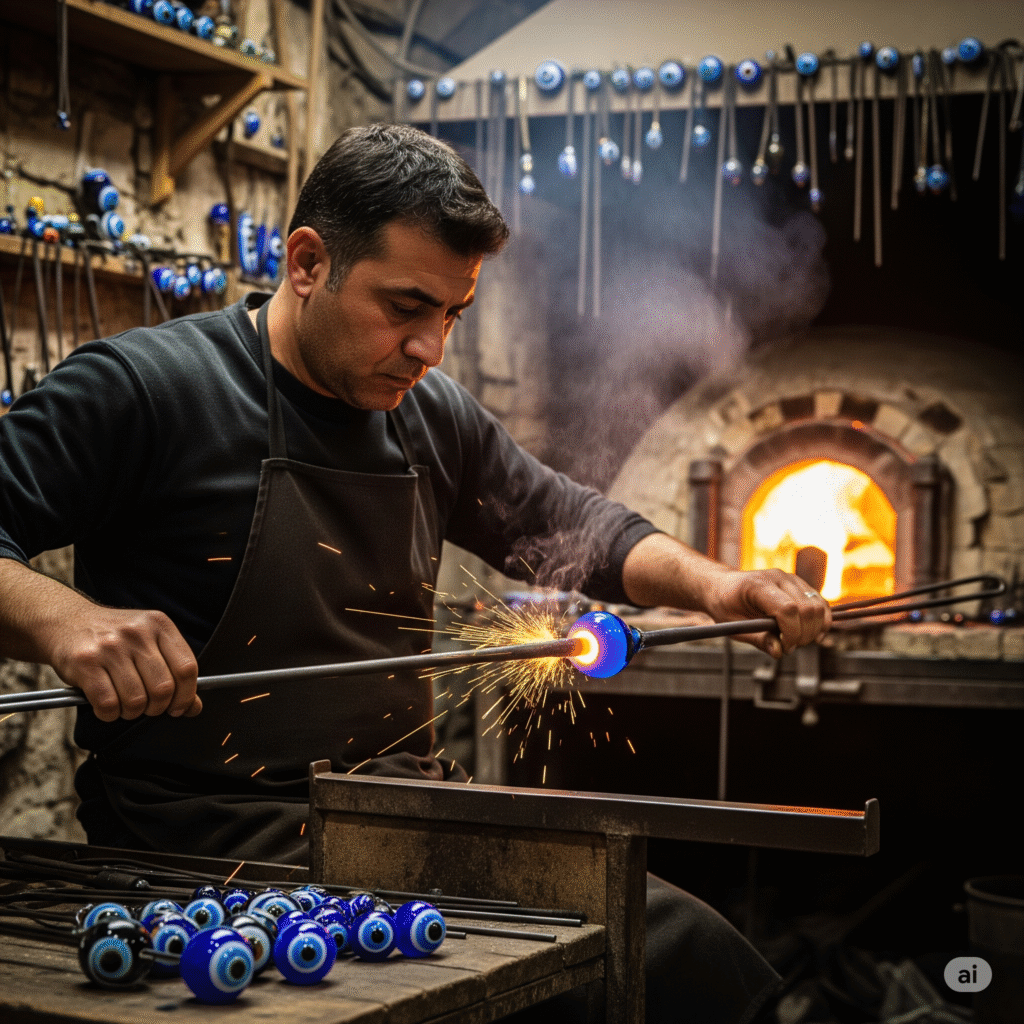
The Nazar Boncuğu — commonly known as the “evil eye bead” — is a traditional amulet used across Turkey and other Mediterranean cultures to ward off the “evil eye”: a harmful glare believed to cause misfortune, illness, or bad luck.
Typically made from hand-blown glass in concentric shades of blue and white, the bead resembles an eye. It’s often given as a gift to newborns, newlyweds, and business owners, symbolizing protection, blessings, and good fortune.
The Evil Eye Belief: Ancient and Global
The belief in the evil eye isn’t unique to Turkey. It dates back thousands of years and can be found in cultures across Greece, Iran, Egypt, India, and even Latin America. The idea is simple: envy and ill intentions, even unspoken, can manifest harm — and eyes are believed to transmit this invisible curse.
By wearing or displaying a blue-eye bead, people hope to “reflect” the gaze and send it back, neutralizing its effect. In a sense, it’s a spiritual mirror.
Why Blue? The Color of Protection
Blue has long been associated with water, the sky, and the divine. In Middle Eastern and Mediterranean cultures, it’s considered a calming, healing color. Ancient clay tablets found in Mesopotamia describe blue stones as protective. Cobalt — used in glassblowing — gave the Nazar its signature color, believed to absorb and deflect negative energy.
Some interpretations also link the color blue to the rarity of blue-eyed people in the region — once viewed as exotic and therefore potentially dangerous. The bead acts as a countermeasure: fighting an “evil eye” with another eye.
Crafting the Beads: A Living Tradition
True Nazar Boncuğu are still handmade in small Turkish workshops using centuries-old glassblowing techniques. The process is delicate: artisans heat glass to over 1,000°C, shape it into circles, and layer white and black circles to create the pupil and iris.
In villages like Görece and Kurudere near Izmir, families have been crafting Nazar beads for generations. Each bead, no matter how small, carries the imprint of the maker’s hands and cultural legacy.
Where You’ll Find It
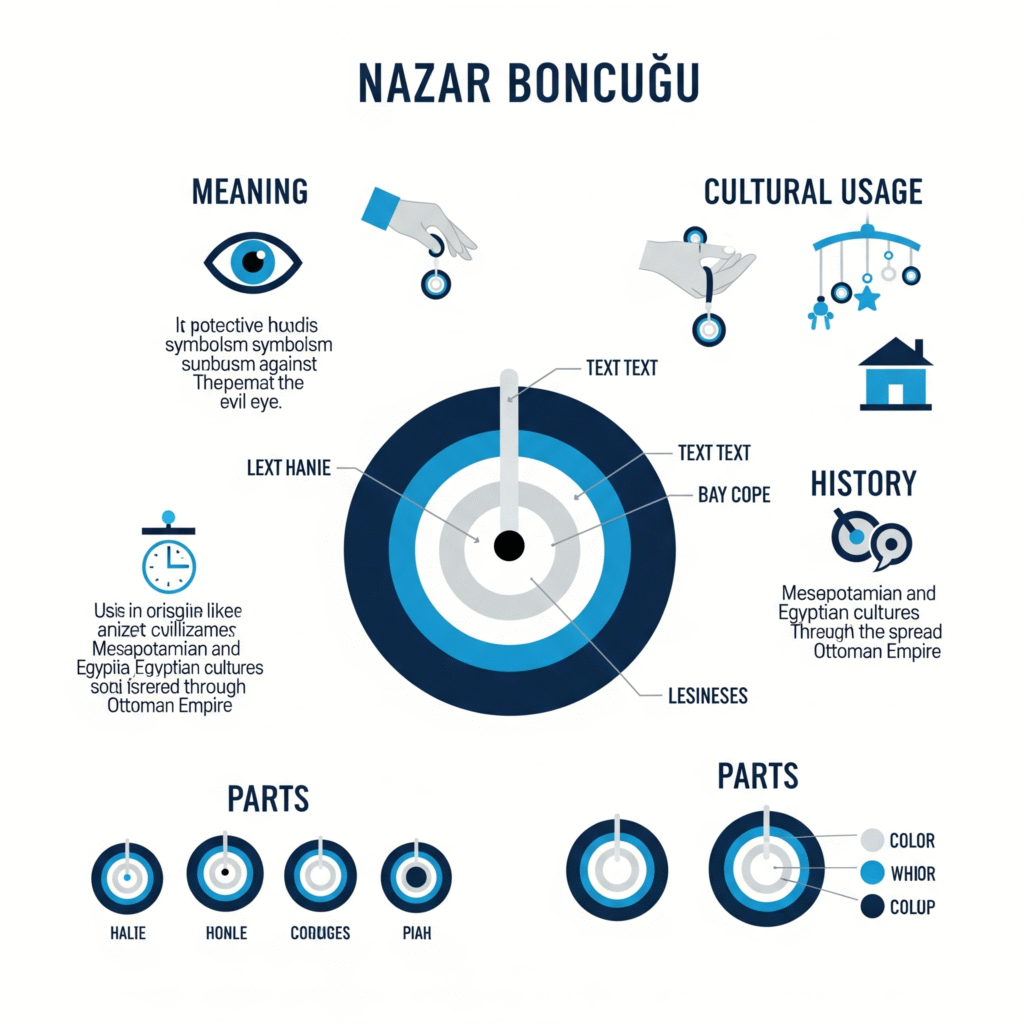
The Nazar isn’t just a charm — it’s woven into everyday life in Turkey. You’ll spot it:
- At the entrances of homes and offices
- Hanging from rearview mirrors in cars
- In the form of keychains, earrings, bracelets, and baby pins
- Decorating market stalls, airports, and city walls
It’s not uncommon for Turks to say “Nazar değmesin” (May the evil eye not touch you) when someone receives a compliment — a verbal shield to match the physical one.
More Than Superstition
While some view the Nazar as folklore, others treat it with deep seriousness. Whether spiritual or symbolic, it represents a shared belief system about envy, energy, and the need for protection in a fragile world.
In recent years, the Nazar has also become a fashion icon. Designers worldwide incorporate it into modern jewelry, accessories, and clothing. Yet even in trendy forms, its protective purpose remains intact — a visual whisper that says, “I see you. I’m safe.”
Conclusion: The Watchful Guardian
From ancient times to today’s global markets, the Nazar Boncuğu remains one of the most enduring cultural symbols of protection. Behind its simple design lies a powerful message: eyes have energy, and we must guard our spirits against envy and negativity.
So next time you spot that little blue eye glinting from a wall or a bracelet, remember — it’s not just a charm. It’s centuries of belief, handcrafted protection, and a beautiful reminder to keep watch over our well-being.
